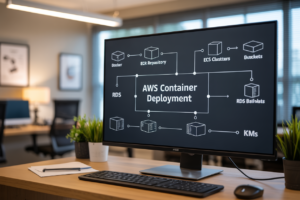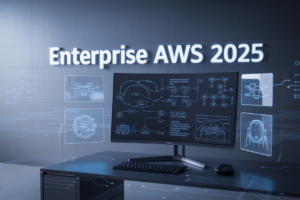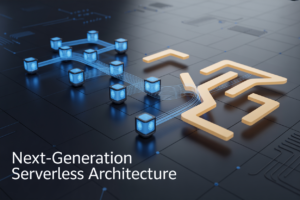Have you ever wondered where all your digital data lives? From the photos you upload to social media to the files you store in the cloud, there’s a hidden world behind our screens that keeps the digital universe spinning. Welcome to the realm of data centers – the beating heart of our connected world.
🌐 In today’s fast-paced digital landscape, data centers are the unsung heroes powering everything from cloud hosting to artificial intelligence. But what exactly are these mysterious facilities, and how have they evolved to meet the insatiable demand for data processing and storage? As we dive into the world of data centers, we’ll uncover the fascinating journey from traditional server rooms to cutting-edge, AI-powered infrastructures that are shaping the future of technology.
Join us as we explore the inner workings of data centers, their crucial role in cloud hosting, and the revolutionary impact of AI on these digital powerhouses. We’ll guide you through the evolution of data center technology, reveal the latest trends, and peek into the future of these essential facilities that keep our digital world running smoothly.
Understanding Data Centers
A. The role of data centers in modern computing
Data centers play a crucial role in today’s digital landscape, serving as the backbone of modern computing. These facilities house and manage vast amounts of data, powering everything from cloud services to artificial intelligence applications. Here’s a breakdown of their key functions:
- Storage and processing of massive data volumes
- Hosting cloud services and applications
- Supporting business operations and digital transformation
- Enabling big data analytics and machine learning
- Ensuring data security and disaster recovery
B. Key components of a data center
A typical data center consists of several essential components working together to provide reliable and efficient services:
| Component | Function |
|---|---|
| Servers | Process and store data |
| Networking equipment | Enable communication between servers and external networks |
| Storage systems | Manage and organize data |
| Power supply systems | Ensure uninterrupted power to all equipment |
| Cooling systems | Maintain optimal temperature for equipment operation |
| Security systems | Protect physical and digital assets |
C. Types of data centers
Data centers come in various types, each designed to meet specific needs:
- Enterprise data centers
- Colocation facilities
- Cloud data centers
- Edge data centers
- Hyperscale data centers
D. Energy efficiency and sustainability in data centers
As data centers consume significant amounts of energy, efficiency and sustainability have become top priorities. Modern data centers implement various strategies to reduce their environmental impact:
- Advanced cooling techniques (e.g., liquid cooling)
- Renewable energy sources (solar, wind)
- Energy-efficient hardware and software
- Smart power management systems
- Waste heat recycling
These efforts not only reduce operational costs but also contribute to a more sustainable digital future. As we move forward, the focus on energy efficiency in data centers will continue to grow, driving innovation in both technology and design.
Cloud Hosting and Data Centers
What is cloud hosting?
Cloud hosting is a revolutionary approach to storing and accessing data and applications over the internet. It leverages a network of remote servers hosted in data centers to provide on-demand computing resources. Unlike traditional hosting, cloud hosting offers scalability, flexibility, and cost-efficiency.
| Feature | Traditional Hosting | Cloud Hosting |
|---|---|---|
| Scalability | Limited | Highly scalable |
| Resource allocation | Fixed | On-demand |
| Cost model | Fixed costs | Pay-as-you-go |
| Reliability | Dependent on single server | Distributed across multiple servers |
How data centers enable cloud services
Data centers are the backbone of cloud hosting, providing the physical infrastructure necessary for cloud services to operate. They house thousands of interconnected servers, storage systems, and networking equipment that work together to deliver cloud services. Key components include:
- High-speed internet connectivity
- Redundant power supplies
- Advanced cooling systems
- Robust security measures
Benefits of cloud hosting for businesses
Cloud hosting offers numerous advantages for businesses of all sizes:
- Cost savings: Reduces capital expenditure on hardware and maintenance
- Scalability: Easily adjust resources based on demand
- Reliability: Ensures high uptime through redundant systems
- Accessibility: Access data and applications from anywhere with an internet connection
- Automatic updates: Cloud providers handle software updates and security patches
Popular cloud hosting providers and their data center networks
Several major players dominate the cloud hosting market, each with extensive data center networks:
- Amazon Web Services (AWS): Global network of data centers in multiple regions
- Microsoft Azure: Presence in over 140 countries with 60+ data center regions
- Google Cloud Platform: Strategically located data centers across the globe
- IBM Cloud: Offers both public and private cloud solutions with worldwide data centers
These providers continually expand their data center footprint to meet growing demand for cloud services and improve performance for users worldwide.
The Evolution of Data Center Technology
From mainframes to distributed computing
The journey of data center technology began with massive mainframe computers, evolving into the distributed computing systems we know today. This shift has revolutionized how businesses process and store data.
| Era | Computing Model | Characteristics |
|---|---|---|
| 1960s-1980s | Mainframe | Centralized, expensive, limited access |
| 1980s-2000s | Client-Server | Distributed, more accessible, scalable |
| 2000s-Present | Cloud Computing | Highly distributed, flexible, cost-effective |
Virtualization and its impact on data centers
Virtualization has been a game-changer for data centers, allowing for more efficient use of hardware resources. Key benefits include:
- Improved server utilization
- Reduced energy consumption
- Enhanced flexibility and scalability
- Faster deployment of new services
Software-defined infrastructure
Software-defined infrastructure (SDI) has further transformed data centers by abstracting hardware resources and managing them through software. This approach offers:
- Greater agility in resource allocation
- Improved automation capabilities
- Enhanced security and compliance management
- Reduced operational costs
Edge computing and its relationship with data centers
Edge computing has emerged as a complement to centralized data centers, bringing computation closer to data sources. This paradigm shift addresses:
- Reduced latency for time-sensitive applications
- Improved bandwidth utilization
- Enhanced data privacy and compliance
- Support for IoT and real-time analytics
As we move forward, the interplay between centralized data centers and edge computing will continue to shape the future of IT infrastructure.
AI-Powered Infrastructure in Data Centers
The rise of AI in data center management
Artificial Intelligence (AI) has revolutionized data center management, transforming the way we operate and maintain these critical facilities. As data centers become more complex and demanding, AI-powered solutions are increasingly being adopted to enhance efficiency, reliability, and performance.
Machine learning for predictive maintenance
One of the most significant applications of AI in data centers is predictive maintenance. Machine learning algorithms analyze vast amounts of sensor data to identify potential issues before they occur, reducing downtime and extending equipment lifespan.
| Benefits of Predictive Maintenance | Description |
|---|---|
| Reduced downtime | AI predicts failures before they happen |
| Cost savings | Maintenance is performed only when necessary |
| Extended equipment life | Timely interventions prevent premature wear |
| Improved reliability | Fewer unexpected failures and outages |
AI-driven energy optimization
Energy consumption is a major concern for data centers. AI-powered systems optimize energy usage by:
- Dynamically adjusting cooling systems based on real-time workloads
- Balancing server loads to maximize energy efficiency
- Predicting peak usage times and adjusting power consumption accordingly
Automated resource allocation and scaling
AI enables data centers to automatically allocate resources and scale infrastructure based on demand. This results in:
- Improved performance during peak usage times
- Reduced costs during low-demand periods
- Enhanced overall system efficiency
Enhanced security through AI-powered monitoring
AI-driven security systems provide advanced threat detection and response capabilities. These systems:
- Analyze network traffic patterns to identify potential security breaches
- Automatically respond to and mitigate threats in real-time
- Continuously learn and adapt to new security challenges
With these AI-powered advancements, data centers are becoming smarter, more efficient, and more secure than ever before. As we look to the future, it’s clear that AI will continue to play a crucial role in shaping data center technology and operations.
Future Trends in Data Center Technology
Quantum computing and its potential impact
Quantum computing is poised to revolutionize data center technology, offering unprecedented processing power for complex calculations. Unlike classical computers, quantum computers leverage quantum bits or qubits, enabling them to perform multiple calculations simultaneously. This breakthrough could lead to:
- Faster data processing
- Enhanced machine learning capabilities
- Improved cryptography and security measures
| Feature | Classical Computing | Quantum Computing |
|---|---|---|
| Processing | Sequential | Parallel |
| Speed | Limited by transistor size | Exponentially faster |
| Applications | General-purpose | Specialized for complex problems |
Green data centers and renewable energy integration
As sustainability becomes a priority, data centers are increasingly adopting green technologies and renewable energy sources. This shift not only reduces environmental impact but also offers long-term cost savings. Key trends include:
- Solar and wind power integration
- Energy-efficient hardware and infrastructure
- Carbon-neutral operations
Liquid cooling and other advanced cooling technologies
With the growing demand for high-performance computing, traditional air cooling systems are becoming insufficient. Advanced cooling technologies, particularly liquid cooling, are gaining traction:
- Direct-to-chip liquid cooling
- Immersion cooling
- Two-phase cooling systems
These methods offer better heat dissipation and energy efficiency, allowing for higher density server configurations.
5G and the future of connectivity in data centers
The rollout of 5G networks is set to transform data center connectivity, enabling faster data transfer and reduced latency. This technology will support:
- Edge computing capabilities
- Internet of Things (IoT) device proliferation
- Real-time data processing and analysis
As these trends converge, data centers will evolve into more efficient, powerful, and sustainable hubs of digital infrastructure, driving innovation across industries.
Data centers have become the backbone of our digital world, powering everything from cloud hosting to cutting-edge AI applications. As we’ve explored, these technological marvels have evolved dramatically, transforming from simple server rooms to sophisticated, AI-powered infrastructures that drive innovation across industries.
The future of data centers is bright, with emerging trends like edge computing, sustainable design, and advanced AI integration promising to revolutionize how we store, process, and utilize data. As businesses and individuals increasingly rely on digital services, understanding the role and capabilities of data centers will be crucial for making informed decisions about technology adoption and infrastructure planning. Embracing these advancements will be key to staying competitive in our rapidly evolving digital landscape.




















